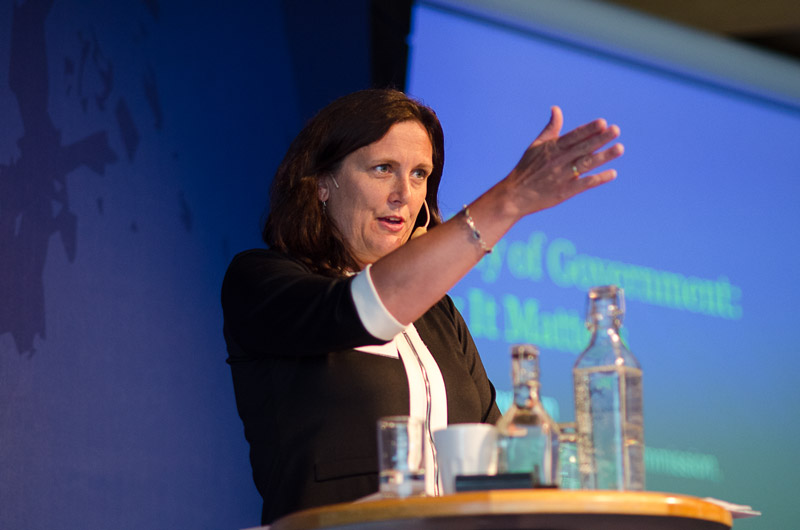
On September 16, EU Trade Commissioner Cecilia Malmström unveiled a new proposal to address the widespread concerns in Europe on the dispute settlement mechanism previously included in the negotiations for the TTIP and the CETA agreements. The Investment Court System, set to replace the infamous ISDS, was designed partly to respond to the objections raised by the European Parliament with the July 9 vote on the Lange report – which despite its non-binding nature, effectively rejected the ISDS provision.
The new mechanism – referred to as ICS – has been structured following previous directions given by the Commissioner on the permanent nature of the court. It would be composed of fifteen judges, five from each block (US & the EU) plus five from third countries: one from each group shall subsequently be called to form a three-person panel to settle a dispute. Furthermore, there is also an appeal tribunal, consisting of six judges equally divided into the same three group. The public nature of this court is one of the main point of this new strategy, designed to guarantee the independence of the judges from any bias.
In addition to all of that, the text of the proposal contains an explicit reference to the right of the parties (the US or the EU and its member states) to “regulate within their territory through measures necessary to achieve legitimate policy objectives (art 2.1)”. These legitimate objectives are then listed and include elements such as health, environment, and consumer protection. Again, this is intended to address another common argument against international courts, which is the fear of corporations blocking new legislation which could potentially harm them through legal action.
Overall, the initiative of the Trade Commissioner has been warmly greeted by both MEPs and the general public, as the ISDS has represented for many the core issue with TTIP. Moreover, in winning over the S&D group – with MEP Bernd Lange defining the ICS as a success – Cecilia Malmström is trying to secure a solid majority for when the Parliament will be called to approve the treaty – eventually.
Nevertheless, the case for ICS replacing the traditional ISDS system is much weaker on the other side of the Atlantic. Though the next negotiating round – the eleventh – is scheduled to take place only at the end of October (19-23), it appears that the proposal of Ms. Malmström has not gained much support in the U.S. Moreover, with the Trans-Pacific Partnership nearing completion and the ISDS clause is well embedded in the agreement, opening a serious discussion on its core – albeit only with their European counterpart – may represent a substantial risk to take for the U.S. just in the closing phases of the TPP.
Given this plausible scenario, it may seem that the main issue with the ISDS/ICS controversy is mostly a matter of bad timing – provided that the US may eventually accept the proposal of the Commissioner. Unfortunately, time itself is a crucial element for a successful development of the TTIP agreement, as we have already pointed out the difficult political challenges that both parties are going to face in the next years – namely domestic elections and the UK referendum. All in all, Malmström’s efforts may effectively be too little, too late.



